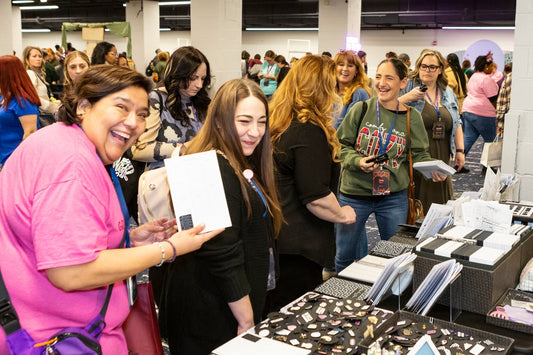
Blank pages can be daunting. The empty space seems to taunt you, doesn’t it? But don’t worry—I’ve got a fun, easy, and stress-free doodling idea to help you break through that creative block: bubbles!
This simple activity doesn’t require artistic mastery or fancy supplies. In fact, you can do it with just a few rolls of washi tape (or any circular object to trace) and your favorite colored pens or markers. It’s extra magical on blackout paper, but any paper works!
Ready to get started? Let’s make some bubble magic together!
Please Note: You can also watch this tutorial in full video format on instagram.
Step 1: Gather Your Supplies
Here’s what you’ll need to start creating your bubble masterpiece:
- Washi tape rolls: Grab a few in different sizes to make a variety of circles. (Alternatively, anything circular you can trace works!)
- Colored pens/markers: In my example, I used Pentel Milky Pop Hybrid pens for their vibrant hues on blackout paper.
- Your favorite paper: Blackout paper adds an extra special touch, but any paper will do.
Step 2: Trace Your Bubbles

Using your washi tape rolls, start tracing circles all over your page. Here are some tips for this step:
- Mix sizes: Use washi rolls of varying sizes to create small, medium, and large bubbles. You can even trace the inside or outside of the rolls for more variation.
- Overlap for movement: Let your circles overlap each other and even extend off the edge of the page. This gives your design a sense of motion and makes it look more dynamic.
- Don’t worry about perfection—this is supposed to be fun, not stressful!
Step 3: Pick Your Colors with Analogous Color Theory
Before we dive into coloring, let’s talk about analogous colors. In color theory, analogous colors are any three colors that sit next to each other on the color wheel. These colors naturally look harmonious together, creating a pleasing effect.

Here are a few examples of analogous sets:
- Blue, Purple, Pink
- Pink, Orange, Yellow
- Yellow, Green, Blue
For this activity, choose a few sets of analogous colors to work with. In my example, I used six colors and paired them into three sets. This makes the inlining process more cohesive and visually interesting.
Step 4: Inline Your Bubbles

Here’s where the fun begins! Instead of outlining your circles, we’re going to inline them—adding color just inside the edges of the bubbles.
Foreground Bubbles:
- Start by picking 4–7 bubbles to work on first. These will be your foreground bubbles, the ones that appear closest to the viewer.
- Using your analogous colors, begin inlining each bubble with curved lines that hug the edge of the circle.
- If a bubble overlaps with another, go ahead and trace over the intersecting lines—foreground bubbles take priority!

Background Bubbles:
- Once you’ve finished your foreground bubbles, move on to the ones in the background.
- This time, avoid crossing over any lines that belong to the foreground bubbles. The goal is to create depth by keeping the background bubbles “behind” the foreground.
- Repeat the process, filling in the remaining circles with your chosen colors.

Step 5: Add the Final Touches
Once all your bubbles are inlined and your page is bursting with color, take a step back and evaluate. Are there any empty spaces that feel incomplete? If so, add a few more colorful bubbles to balance out the design.
Don’t feel obligated to fill the entire page—this activity is about having fun, not perfection.

Why This Activity is So Relaxing
There’s something inherently calming about this process. The repetitive motion of tracing and coloring combined with the vibrant colors creates a meditative experience. Plus, the end result is always satisfying—your page transforms from a blank canvas into a whimsical work of art.
Bonus Tips:
- Need more guidance on foreground and background? Watch the full video tutorial for this design to get a better understanding and see it in action.
- Experiment with pigment: Try using different types of pens, markers and pencils to see what blends for you best!!
- Layer your colors: For even more dimension, experiment with layering different analogous sets within the same bubble. Or include every color in every bubble for true chaos!
- Try it on different surfaces: While blackout paper is my favorite for this activity, regular white paper works great too!
Give it a Try!
The next time you’re staring at a blank page, don’t let it intimidate you—just start drawing bubbles! This is the perfect rainy-day activity or a relaxing way to wind down after a long day.
And remember, creativity is a form of self-care. So, grab your washi tape, pens, and paper, and let your imagination take over.
Let’s Make Some Bubbles Together!
If you try this activity, I’d love to see your creations! Snap a pic and tag me @lightsplanneraction on Instagram. Happy doodling!



